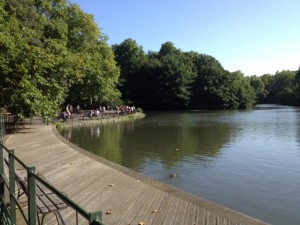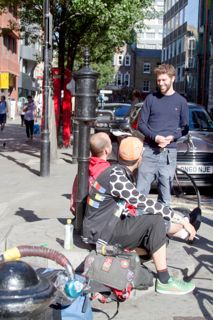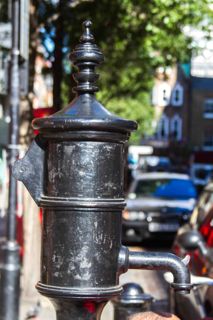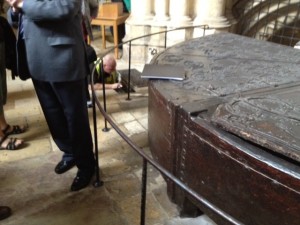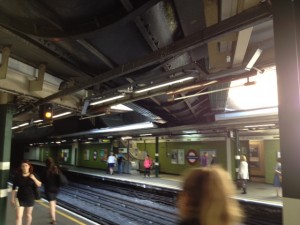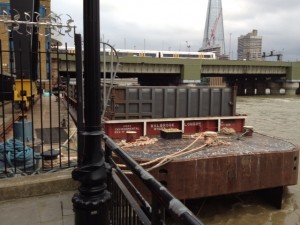Lissa first spotted a parakeet last week out by Greenwich, a flash of green knifing into trees above the garden path we were walking. It was just a glimpse followed by a fruitless search through the trees to identify the source of the squawking, followed by a visit to my Pocket Guide to the Birds of Britain:
Native of India, introduced into Europe (first noted Kent 1969). Scarce but firmly established in south-east England (especially London area).
Then yesterday, sitting by the water in Regent’s Park, a flock swooped back and forth between an island and the horse chestnut tree beneath which we sat giving us a serious good look. Eventually they settled in the tree on our side, squawking and raining down horse chestnuts, half eaten, on the walk in front of us.
There’s a seriousness here (befitting an island nation) about discussions over invasive species in general and the ring-necked parakeet in particular. In 2006, the bird was one of the 20 most common birds in London’s Big Garden Birdwatch. Is it time to start culling parakeets? the Guardian asked in 2009.
But in greater London, where immigration has always been a complicated topic, it’s also hard not to see metaphor in the conversation. The only nature here is built nature, like the lake in Regent’s Park (vestigial mimicry of the old River Tyburn) over which our parakeets swooped yesterday afternoon. In his essay “London’s Overthrow,” (part of my introduction to the modern version of the city) China Miéville goes out with “urban birder” David Lindo. Lindo wants to share the natives, the black-headed gulls, but indulges Miéville’s “non-specialist’s fascination with the unlikely parakeets”:
‘They nest in holes,’ Lindo says. ‘There’s anecdotal evidence that they oust our native hole-nesters, like starlings, stock doves and nuthatches. And’ — he pauses grimly — ‘there’s a shortage of holes in Britain as it is.’
For all of us. Everyone knows there’s a catastrophe, that few can afford to live in their own city. It was not always so.
Miéville clearly doesn’t mean this the way I’m spinning it. It’s London’s wealth that’s closing off the native holes – “that few can afford to live in their own city” – not the immigrant parakeets. Maybe my reaction to the vehemence of the debate over parakeets or the attack of the invasive grey squirrel, the metaphor I’m drawing, is bollocks (geez I love doing this). Just hard not to notice Britain’s passion for fending off the critters that don’t belong here.
In my backyard in Albuquerque, the European house sparrow is one of the most common feeder birds. But I’ve only spotted them here once.

